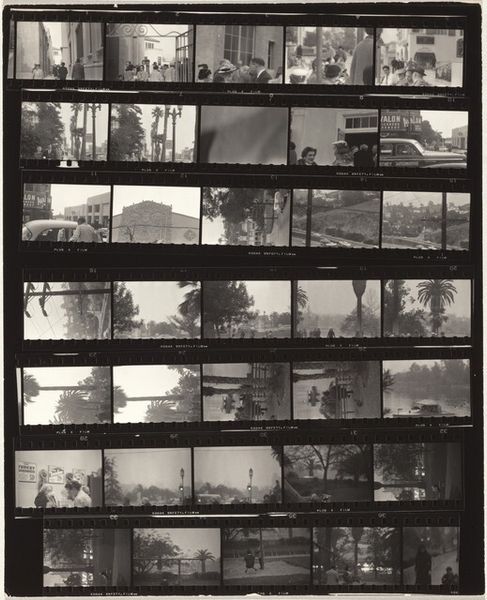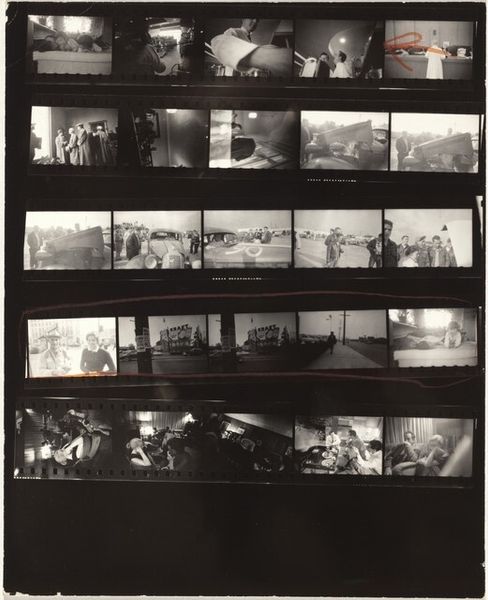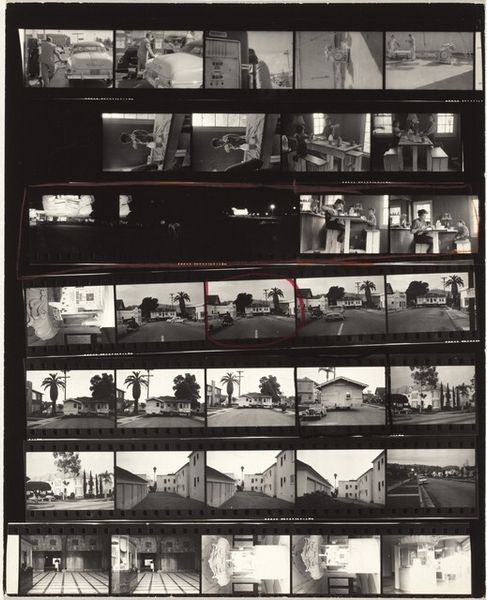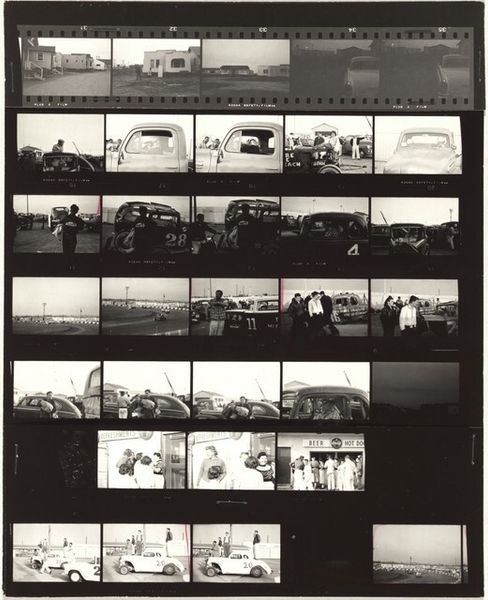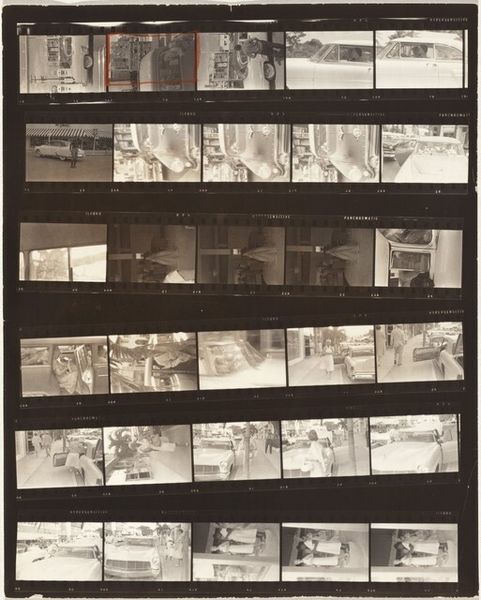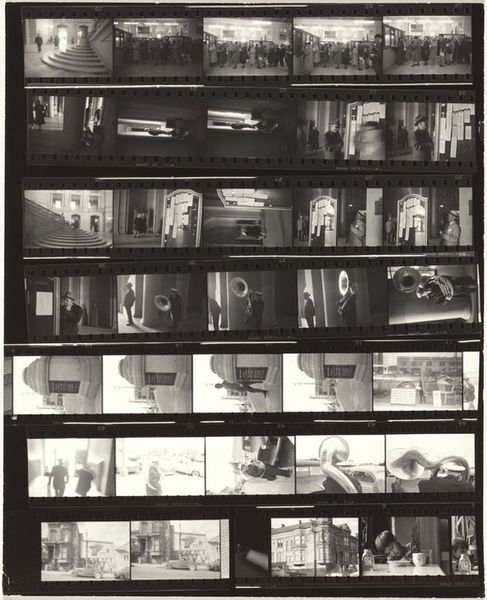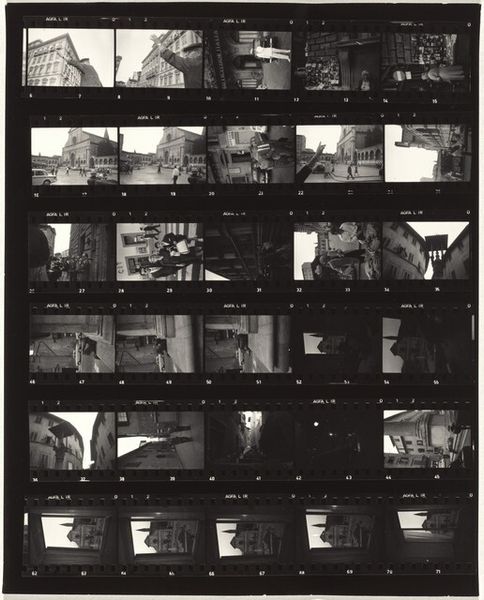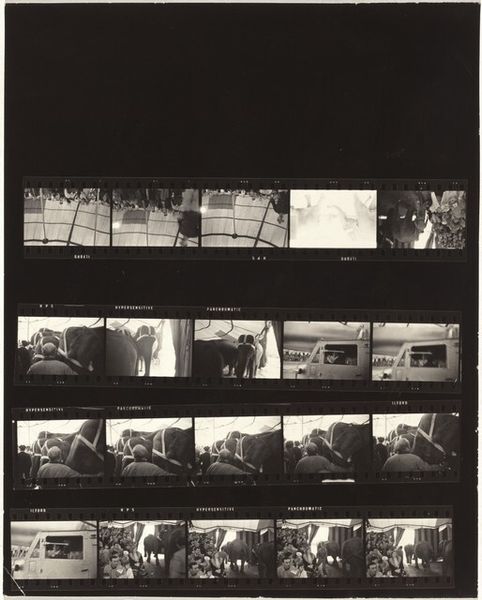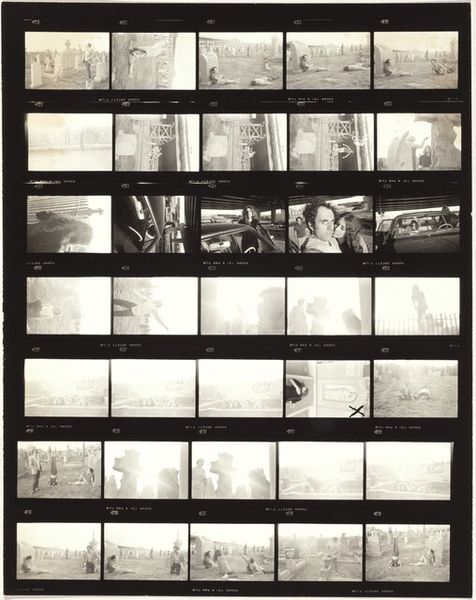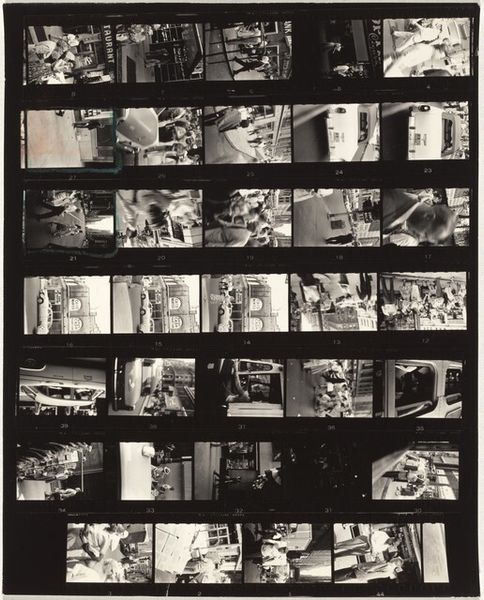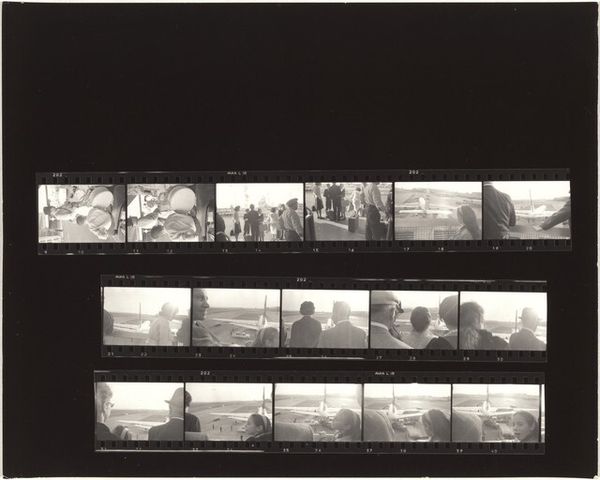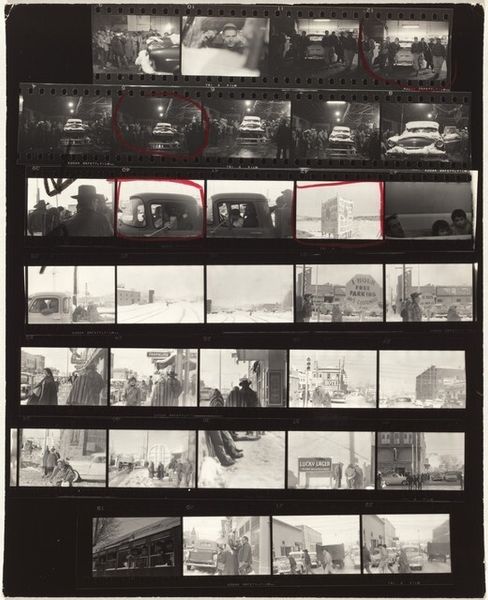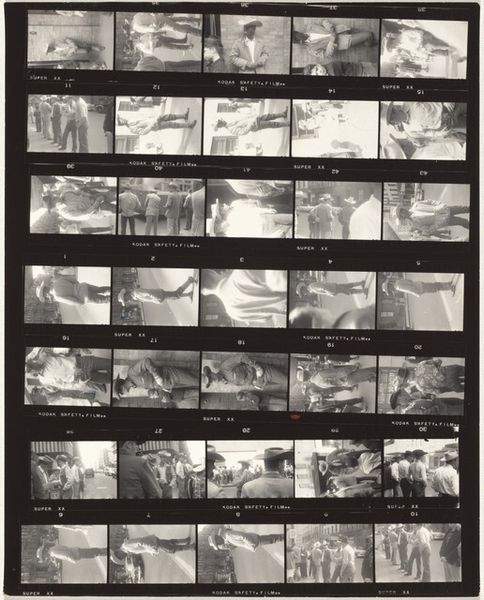
photography, gelatin-silver-print
#
landscape
#
archive photography
#
street-photography
#
photography
#
photojournalism
#
gelatin-silver-print
#
cityscape
#
modernism
#
realism
Dimensions: sheet: 20.2 x 25.2 cm (7 15/16 x 9 15/16 in.)
Copyright: National Gallery of Art: CC0 1.0
Curator: Robert Frank's "Visit to Aunt Frida's--Pennsylvania no number" created in April of 1947 using a gelatin-silver print presents us with a series of glimpses, a narrative told through multiple frames within a single photographic work. What's your immediate take on it? Editor: Immediately, I'm struck by the juxtaposition. There’s a sense of fragmented Americana, seen through the lens of transit. It evokes a feeling of both connection and distance, like flipping through old family slides. There is this contrast between the patriotic imagery with scenes of everyday life with what appear to be the journey itself. Curator: Indeed. And I think understanding the gelatin-silver process is key. This process allowed for mass reproduction but also created images with incredible tonal range. This piece becomes a study of grays. It mirrors the period: post-war America with its burgeoning consumer culture built on very real, very gray, realities of work. Editor: Absolutely. Look at how Frank positions the viewer. The interior car shots seem to dominate half the frame suggesting that perspective matters. We see the driver but never his face, we’re invited to think about who is this "we" visiting Aunt Frida? The framing almost demands we consider our own position relative to this mid-century American experience. The patriotic imagery, flags and band are traditional markers, symbols we should examine rather than simply take as representative of the truth of America. Curator: Right, and he disrupts the tradition. He shows a store-window flag display, next to a less obvious patriotic ceremony, rather than capturing idealized heroic symbols. The gelatin-silver print emphasizes the grainy texture and raw presentation further underlining that contrast you mention, he wants to show, rather than idealize. He seems concerned with production - reproduction - the act of representation and by using several scenes on a contact print from a roll of film it appears that Frank, even here, is playing with ways to break convention by thinking of photographic film and print in terms of its physical properties as an object of display rather than simply an indexical record. Editor: The flags and landscapes, the almost clinical view of the driver's head – it makes me question whose America is being represented. Who is invited to Aunt Frida’s and who is explicitly and implicitly excluded from that table? I think we can appreciate how this particular print functions both as object and a challenge, especially if it's indeed rooted in family visits and yet so consciously fragmented for viewers and audiences who will be so unfamiliar with the specifics. Curator: Frank used his materials and process in service to challenge what he, and perhaps his Aunt Frida, had been taught, perhaps creating more questions than answers. It really underlines that even something as seemingly simple as a family visit is full of nuance. Editor: Precisely. This photograph as artifact gives the chance to see something very intimate but, due to Robert Frank's choices in terms of presentation, its also simultaneously critical.
Comments
No comments
Be the first to comment and join the conversation on the ultimate creative platform.
